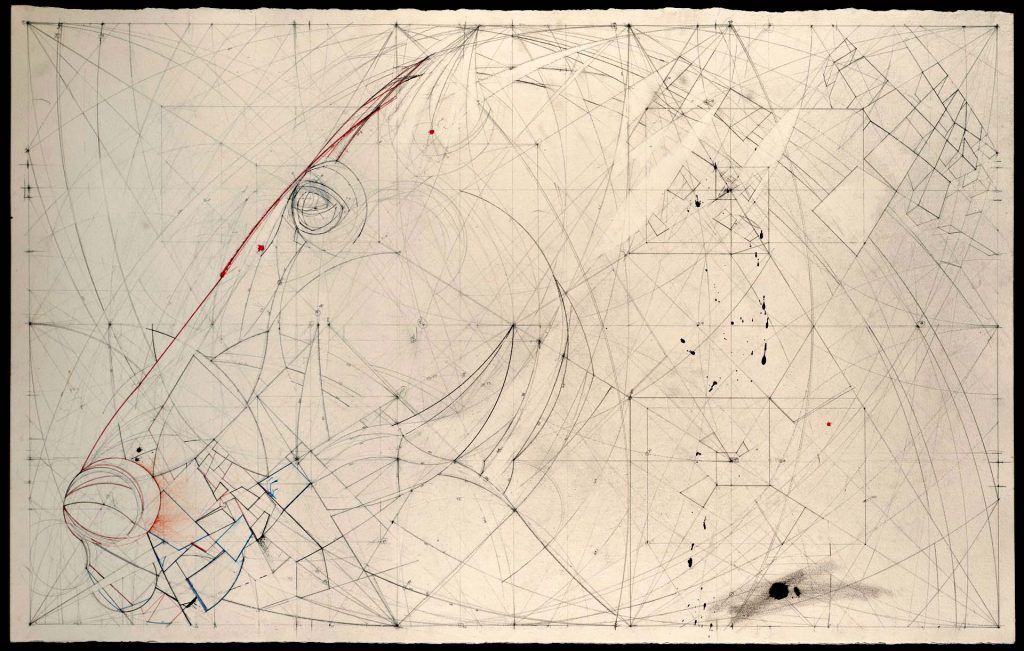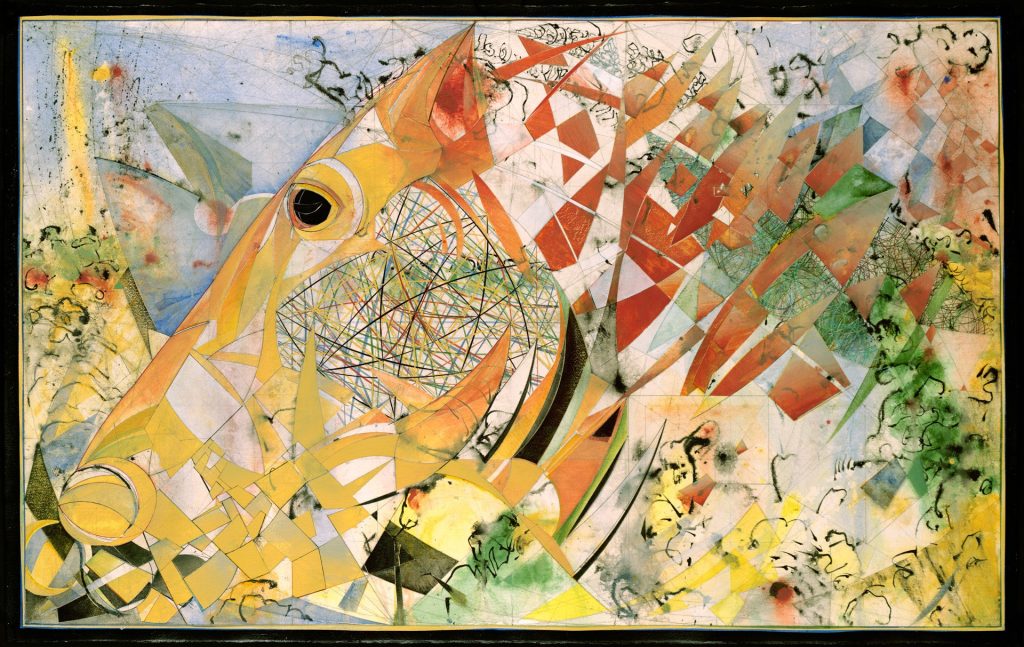What if we start constructing an image based solely on a GM grid with no
predetermined outcome or image. That is a picture that is a picture of itself not of something else. To further isolate this from gestural and arbitrary mark making it was necessary to confine the lines and shapes to vertexes on the GM grid. All the containers and lines had to have their boundaries drawn along major and minor vertices, for arcs the center had to land on a vertex and the start and end of the arc had to be coincident with other vertices. You may be able to see some of the qualities that method causes in the drawing. As the grid was being completed it became apparent that an image of the head of the Selene Horse similar to the one by Phidias from the Elgin Marbles (also constructed on a GM grid).

This was not an intentional occurrence but we allowed it to dominate because having a secondary image just show up like that fit with the original intent of the piece to not have a predetermined image to represent. The color shapes were picked out based on random selection of containers in lighter or darker lines, that is, pencil lines that were gradually bolded by however many times they had to be drawn over to complete the grid.
The title ANABASIS refers to the famous story by Xenophon of the Ten Thousand fighting their way back to Greece after their failed attempt at plunder in a Persian civil

war (401 BCE). The term anabasis means going up or out and back. This painting is kind of a parable of that expedition—the difference is the order of intention. Even though the piece was started without intention and had a possibility of chaos, democratic order prevailed.
2 responses to “How We Made Anabasis”
I like your work
Thank you, I like yours too